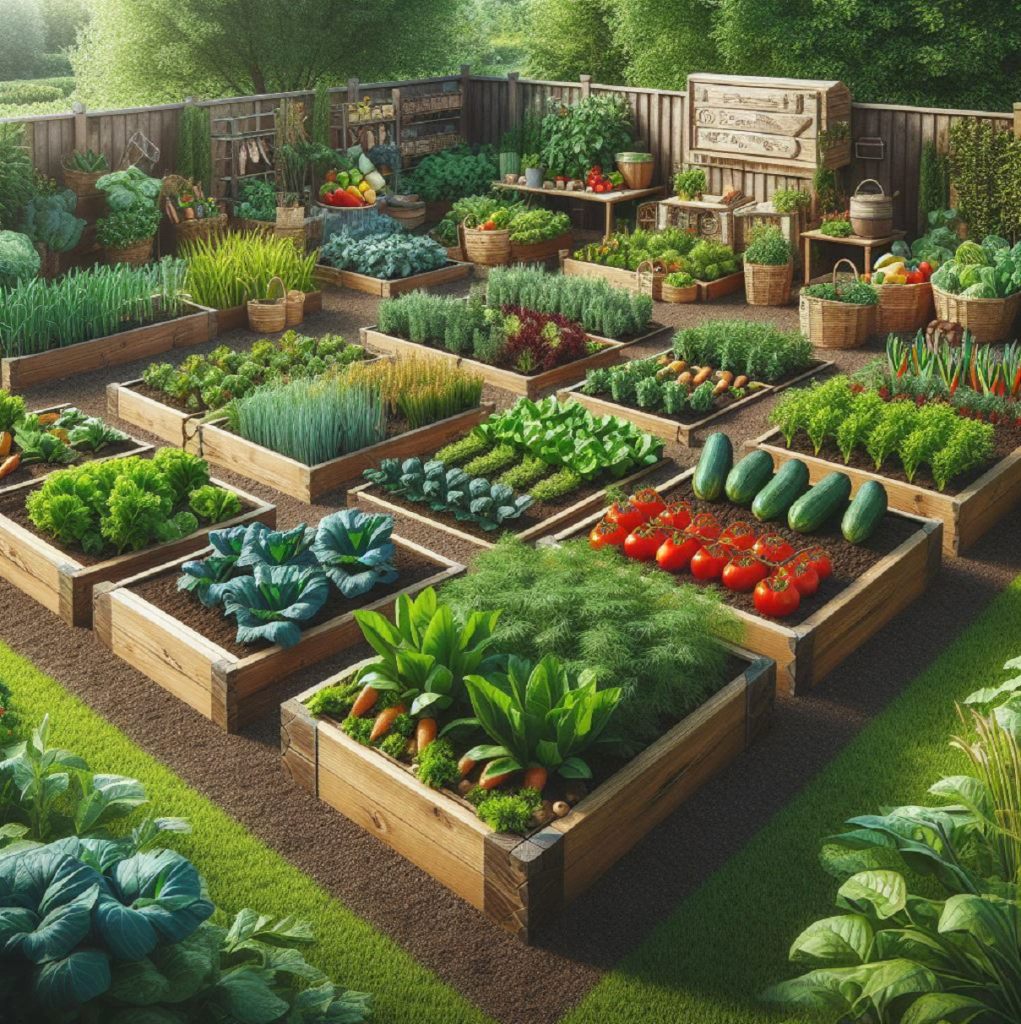Raised bed vegetable garden design layouts
As people in urban areas and those whose grow space is limited search for an alternative, raised bed vegetable garden design layouts are creating such solutions to boost yields and make the most of every single foot of the growing area available. Pitched bed gardens have several advantages over traditional in-ground soil, including but not limited to drainage, soil quality, and accessibility.

The Advantages of Raised Bed Vegetable Garden Design Layouts:
The raised-bed vegetable garden design that follows the traditional row layout makes for the most preferred set-up when compared to row gardening. Above all, you get to design the garden bed with the right soil setting so that your plants have the best soil nutrient source and moisture level to make them grow to their fullest potential. Moreover, raised beds are convenient for people with physical limitations, as they cut down on extreme body movements, such as hindrances to excessive bending and kneeling.
Planning Your Raised Bed Vegetable Garden Design Layouts:
Before building those raised beds, the plan for your raised bed should be very thorough. Consider the following factors:
The Classic Rectangular Beds: centuries-old design involves raised rectangular beds running straight from each other and shaded by bordered pathways meant to put pathways between the entire garden for easy access and navigation.
The Keyhole Garden: This economical design has three components: a central composting area with a circular or semi-circular raised bed, where compost can be distributed from the adjacent raised beds.
The Mandala Garden: Sacred geometric shapes of natural circles were the inspiration for this garden layout, which consists of a concentric raised bed arrangement (in a concentric circle shape) that is at the same time stunning and very spacious.
The Spiral Garden: The spiral garden may share some of the mandala’s traits; neither one nor the other of them is a complete imitation of these other garden designs, and there is a single raised bed that the spiral winds inward, so it makes available a diverse range of micro-climates with efficient use of space.
Designing for Accessibility and Ergonomics:
From an ergonomic perspective, raised bed vegetable garden design layouts should be planned with this in mind so that it will become easier to garden. Raise beds at an angle that prevents the workers from excessively bending and getting hurt; the height of the bed between 12 and 24 inches is recommended. In addition to this, it is recommended to include tracks with enough width to accommodate wheelchairs or garden carts, depending on the need.
Incorporating vertical gardening:
Memory will grow up, and you will find yourself taking place in a hospital bed in your own house. By introducing trellises, cages, and other supports, the earth could be used as a medium for growing vining crops like cucumber, tomatoes, and pole beans, allowing them to grow upwards, which would free up precious space on the ground for other plants.
Conclusions about Raised bed vegetable garden design layouts:
Designing raised-bed vegetable gardens that are practical and productive is a complicated task that demands a detailed discussion of several dependence factors. Through adequate care of your allocated area, sun exposure, accessibility, and rotation of crops, you can come up with an arrangement that uses space economically and also promotes garden aesthetics. Don’t forget to add walkways, companion planting, and the use of vertical planters, as this will greatly improve your raised bed garden layouts.

Αφήστε μια απάντηση